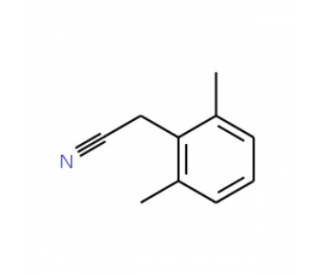详细说明
Purity
>95%, by SDS-PAGE under reducing conditions and visualized by silver stain
Endotoxin Level
<1.0 EU per 1 μg of the protein by the LAL method.
Activity
Measured by its ability to cleave carnosine ( beta -Ala-L-His) in a two-step assay. The specific activity is >250 pmol/min/µg, as measured under the described conditions. See Activity Assay Protocol on www.RnDSystems.com
Source
Mouse myeloma cell line, NS0-derived Pro28-His507, with a C-terminal 10-His tag
Accession #
N-terminal Sequence
AnalysisPro28
Predicted Molecular Mass
55 kDa
SDS-PAGE
65 kDa, reducing conditions
2489-ZN |
| |
Formulation Supplied as a 0.2 μm filtered solution in Tris and NaCl. | ||
Shipping The product is shipped with dry ice or equivalent. Upon receipt, store it immediately at the temperature recommended below. | ||
Stability & Storage: Use a manual defrost freezer and avoid repeated freeze-thaw cycles.
|
Assay Procedure
Materials
Assay Buffer: 50 mM Tris, pH 7.5
Recombinant Human Carnosine Dipeptidase 1/CNDP1 (rhCPGL2) (Catalog # 2489-ZN)
Substrate: L-Carnosine (Sigma, Catalog # C9625), 100 mM stock in deionized water
Trichloroacetic acid (TCA) (Sigma, Catalog # T6399), 10% in deionized water
NaOH, 2 M stock in deionized water
o-Phthaldialdehyde (OPA) (Sigma, Catalog # P0657), 50 mg/mL in DMSO
F16 Black Maxisorp Plate (Nunc, Catalog # 475515)
Fluorescent Plate Reader (Model: SpectraMax Gemini EM by Molecular Devices) or equivalent
Dilute rhCDNP1 to 2 ng/µL in Assay Buffer.
Dilute Substrate to 2 mM in Assay Buffer.
Mix 50 μL of 2 ng/µL rhCDNP1 and 50 μL 2 mM Substrate for a final concentration of 1 ng/µL and 1 mM respectively. Include a Substrate Blank containing 50 μL rhCDNP1, 50 μL 1% TCA added 1 minute prior to substrate addition, and 50 μL Substrate.
Incubate for 1 hour at room temperature.
Stop reaction by adding 50 μL 1% TCA (except the Substrate Blank). Centrifuge for 10 minutes at 13,000 rpm in a microcentrifuge to spin down any precipitate.
Transfer the supernatant to new tubes.
Dilute OPA to 5 mg/mL in 2 M NaOH.
Add 50 μL of 5 mg/mL OPA to each reaction.
Incubate for 30 minutes at room temperature.
Load 200 µL (entire volume) of the incubated samples into the plate.
Read at excitation and emission wavelengths of 360 nm and 460 nm (top read), respectively, in endpoint mode.
Calculate Specific Activity:
Specific Activity (pmol/min/µg) = | Adjusted Fluorescence* (RFU) x Conversion Factor** (pmol/RFU) |
| Incubation time (min) x amount of enzyme (µg) |
*Adjusted for Substrate Blank
**Derived using calibration standard L-Histidine (Sigma, Catalog # H6034).
Per Well:
rhCDNP1: 0.100 µg
Substrate: 0.5 mM
Background: Carnosine Dipeptidase 1/CNDP1
The human CNDP1 gene encodes carnosine dipeptidase 1, a member of the M20 family of metalloproteases (1, 2). Also known as X-His dipeptidase, glutamate carboxypeptidase-like protein 2 (CPGL-2) or carnosinase 1 (CN1), CNDP1 is a secreted dipeptidase with a narrow specificity for Xaa-His dipeptides including those with Xaa = beta -Ala (carnosine) and Xaa = gamma -aminobutyric acid (homocarnosine), two naturally occurring dipeptides with potential neuroprotective and neurotransmitter fucntions in the brain. In comparison, a closely related protein known as CNDP2, CPGL or CN2, is a cytosolic nonspecific dipeptidase.
References:
Teufel, M. et al. (2004) J. Biol. Chem. 278:6521.
Bauer, K. (2004) in Handbook of Proteolytic Enzymes (ed. Barrett, et al.) p. 1022, Academic Press, San Diego.
Entrez Gene IDs:
84735 (Human)
Alternate Names:
beta-Ala-His dipeptidase; Carnosinase 1; carnosine dipeptidase 1 (metallopeptidase M20 family); Carnosine Dipeptidase 1; CN1MGC102737; CNDP dipeptidase 1; CNDP1; CPGL2; CPGL2MGC142072; EC 3.4.13.20; Glutamate carboxypeptidase-like protein 2; HsT2308; MGC10825; Serum carnosinase











 粤公网安备44196802000105号
粤公网安备44196802000105号